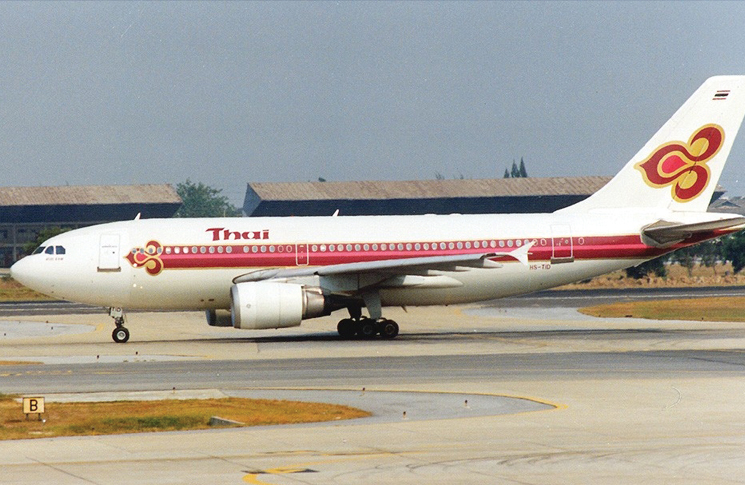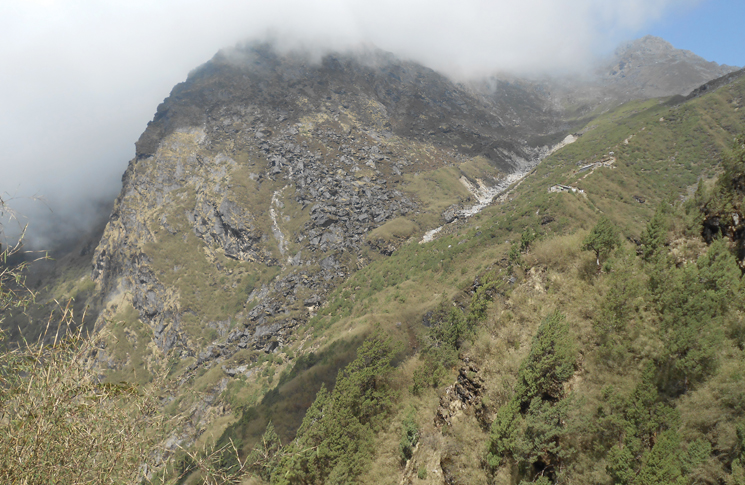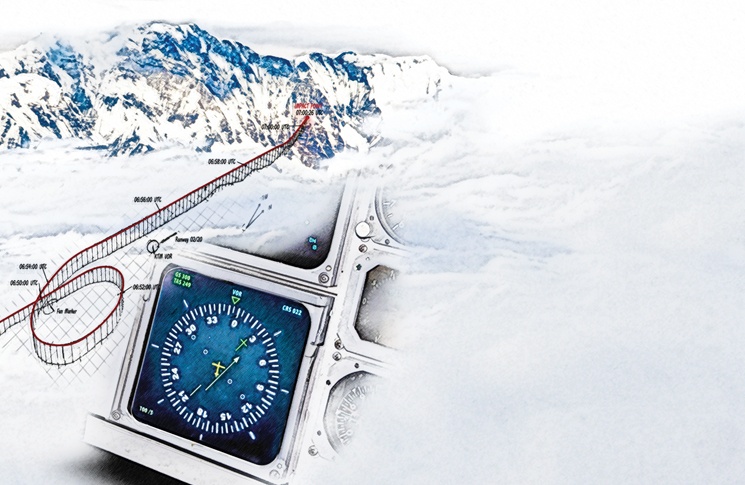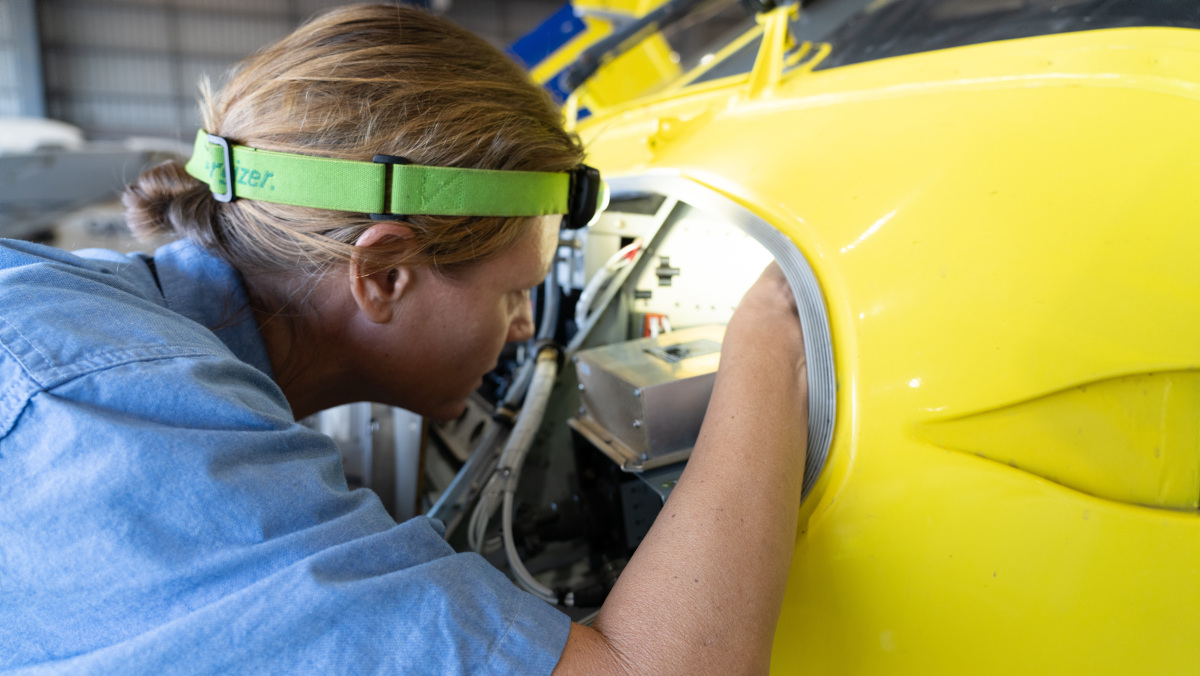Thai Airways flight TG311 Airbus A310-300, HS-TID Langtang, Nepal 31 July 1992
Nothing is easier than self-deceit. For what every man wishes, that he also believes to be true.
– Demosthenes, circa 350 BCE
For 2 days it was as if the jagged teeth of the Himalayan peaks had formed an enormous mouth and swallowed an aircraft whole.
Thai Airways flight TG311 had disappeared without trace while circling after a missed approach to Kathmandu’s Tribhuvan Airport early in the afternoon of Friday 31 July 1992. Not until Sunday morning did reports come in from the rugged and sparsely populated Langtang region of aircraft wreckage at the base of an 800-metre cliff. Local people had heard an unexplained thunderclap but seen nothing through the overcast.
When Transportation Safety Board of Canada (TSB) investigator David McNair arrived at the scene a few days later, he was solemn as he viewed the crash site from a helicopter. ‘You couldn’t see anything that resembled an aircraft,’ he remembers. The crash had directly claimed 113 lives and indirectly, one more. British investigator Gordon Corps, an Airbus senior test pilot, collapsed with altitude sickness on a mountainside at 11,500 feet near the crash site and died soon after. He was 62. ‘He seemed old then, it seems young now,’ McNair recalls from his home in Canada. The TSB team was at the scene because Nepal had invoked International Civil Aviation Organization (ICAO) protocols to request international technical assistance.
Landing at Kathmandu is one of commercial aviation’s more interesting and stringent challenges, even in the second generation of jet transport aircraft used in 1992. Tribhuvan Airport lies in the Kathmandu Valley, 4390 feet above sea level. The surrounding mountains rise to 9655 feet within 12 nm south east of the airport and up to 8365 feet at 8 nm to the south west. To the north, peaks rise to nearly 20,000 feet by 29 nm from the runway. In 1992 there was no terminal radar.
The aircraft’s position was nowhere near where its crew reported.
The Nepali Commission on inquiry was confronted by the hazards of the crash site and a salient but puzzling fact. Langtang is north of Kathmandu and nowhere near the runway 02 missed approach flight path. And the aircraft’s position was nowhere near where its crew reported, and where Kathmandu air traffic control assumed it to be.
Despite the annihilation of the Airbus A310 and its occupants, the flight data and cockpit voice recorders (FDR and CVR) were soon found. Remarkably, both were readable, despite severe impact damage that broke the FDR recording tape. By 9 August, both devices were being read by the TSB in Ottawa. The CVR told, and the FDR verified, a story that was harrowing for investigators to hear: of a minor, temporary mechanical failure combining with flawed communication. These were catalysed by a range of subtle, usually harmless and inherently human biases – and the result was metastasis into fatal, unrecoverable error.
Mountains have a way of dealing with overconfidence.
– Hermann Buhl, climber, 1924–1957
We’ve got to have the configuration. We cannot land. CVR, 11 minutes, 43 seconds before impact
Flight 311 was on the Sierra (VOR/DME) approach to runway 02 at Tribhuvan, in IMC. Faced with a report of heavy rain over the runway, the captain had already discussed diverting to Calcutta in India, with the first officer. Then an ECAM (electronic centralised aircraft monitor) message announced the flaps had not deployed correctly, prompting a mild expression of frustration from the captain and an intention to ‘try it again’ from the first officer. The captain asked ATC for clearance back to Calcutta. This was a strict and appropriate adherence to operator and aircraft requirements, which stipulated full flaps for Kathmandu’s steep final approach.
But only 21 seconds after requesting Calcutta, retracting and then reselecting the flaps fixed the fault. The captain declared it too late to continue the straight-in approach, due to the steep descent angles required.
He requested a left turn back to Romeo, a waypoint 41 nm south south-west of the Kathmandu VOR (KTM). This was an unusual request because the Sierra approach starts at 16 DME from KTM, on the same 202-degree radial. Kathmandu tower cleared the aircraft for the Sierra approach.
In this exchange the aircraft captain and the tower controller revealed their differing mental models of how the new approach was to take place. The captain asked again for a left turn back to Romeo. This led to an unrewarding dialogue with the tower, as mutual misunderstanding becoming the third party in the conversation. About this point, the captain took over radio calls from the first officer. After requests for a left turn, the captain unilaterally made a right turn from the aircraft’s 025-degree heading when the flight was about 7 nm south of the Kathmandu VOR and commenced a climb from an altitude of 10,500 feet to flight level 180. The first officer initiated a review of obstacle clearance and visibility and was interrupted by an instruction to limit altitude so as to maintain separation from an incoming Royal Nepal Airlines flight. As the crew dealt with these matters, the gentle autopilot-commanded turn continued, and eventually pointed them back to a northerly heading of 025 degrees.

The captain contacted the Area Control Centre (ACC) and said the aircraft was ‘heading 025’ and they wished to go to Romeo to start their approach again, adding they had ‘technical problems concerned with the flight’. ACC cleared to Romeo and the captain replied, ‘Report over Romeo’.
It doesn’t show Romeo at all.
CVR, 2 minutes 46 seconds before impact
However, the first officer was finding it more difficult than usual to program Romeo into the Flight Management System (FMS). Translated from Thai language, his remarks include, ‘They are all gone, they have disappeared. We have to direct it again’ and ‘It doesn’t show Romeo at all.’ The FMS offered 5 Romeos to the crew, with the closest one at the top of the list. The CVR shows they used Romeo 27 N, the correct Romeo when attempting a ‘direct to’ selection.
The captain, while maintaining politeness, expressed frustration. Translated, he remarked, ‘Oooy! Want to be crazy. Oooy!’ a colloquialism assessed by Thai-speaking investigators as meaning, ‘Why do we have this problem?’ The first officer spelled out S I M N B – the Simara NDB which is close to Romeo – in an apparent effort to troubleshoot the difficulty in finding Romeo.
Just after this, the captain verbalised, ‘Romeo radial … 202, 16 DME … wait, wait, I will follow the line.’ The first officer attempted another ‘direct to’ input, but it was rejected by the captain after it indicated a ‘return back’. The captain told the first officer to ‘… punch Romeo in again.’ At 16 DME, the captain turned the aircraft 20 degrees to the left which the Commission assessed as consistent with a left reversal-type turn to get back to 16 DME for an approach and evidence that the captain had ‘somehow got the impression that the flight was on the south side of the airport.’
The frustrations with the FMS continued with the first officer saying, ‘This thing fails again’ and the captain eventually commanding, ‘Transfer it from my side.’ The first officer’s reply was, ‘We had transferred it, but it is gone. Same as before’.
It’s false
CVR, 6 seconds before impact
Exactly 25 seconds later, the first officer expressed a polite but deeply serious query. ‘Hey we are going north, (uh)?’ he said. The captain responded with, ‘We will turn back soon’ and requested a right turn. The ACC’s reply, to standby for airport visibility, happened at the same time as the ground proximity warning system sounded its stentorian, ‘Terrain! Terrain!’ and ‘Whoop-whoop PULL UP!’ These warnings continued for the remainder of the flight.
The first officer said, ‘Turn back, turn back’. The captain commanded a level change but said, ‘It’s false, it’s false’.
Controlled flight into terrain is always brutal, but can also be paradoxically merciful, extinguishing existence in an instant without warning or fear. But not in this case. In the terse words of the Commission’s report, ‘There was an exclamation by a crew member and the recording ended about one second later.’
Collision of factors
Confirmation bias emerged, unspoken but clearly present in the cockpit recording. The online aviation reference SKYbrary defines it as: ‘Once an initial understanding (mental model) has been formed, the individual will search his/her memory and the immediate situation for additional data relevant to that mental model … Although potentially confirmatory information tends to be taken at face value, potentially disconfirming information is subjected to a more critical and sceptical scrutiny.’
It was suggested to the Commission that the captain was aware the aircraft was flying north. The Commission rejected this possibility because of the captain’s record of strict procedural compliance, his thorough knowledge of instrument procedures and the lack of any compelling evidence on the CVR to support the notion of the crew deliberately flying the wrong way. Indeed, the captain’s record had been impressive, an ex-Royal Thai Air Force pilot who had recently been promoted to simulator instructor. He had recorded no incidents or accidents in his 13 years with the airline.
The first officer, at 52, 11 years older than the captain, had been his simulator student the previous March. He had passed this session with no adverse comments, but his personnel file had already been marked with the note that he was unsuitable for promotion to captain, after having achieved insufficiently on initial aptitude tests. On an earlier simulator session, the instructor commented on the requirement for the first officer to follow procedures, basic flight instrument indications and for the ECAM actions to be done in sequence.
‘The captain was a high achiever and he likely had an opinion of the co-pilot’s capabilities,’ McNair says, but the significance of this lay not in the first officer’s shortcomings but in the authority gradient created on the flight deck.
There had been no overt mistrust or disdain – the captain addressed the first officer using a respectful Thai language honorific meaning ‘big brother’. But subtle, unconscious, biases and expectations were in play.
‘The captain was saying “Give me the Romeo point” and assuming the co-pilot wasn’t using the flight management system correctly, but in fact, it was working perfectly,’ McNair says. ‘They kept re-entering the data and every time they selected Romeo, the FMS indicated a 180-turn, which the crew didn’t accept. They either concluded there was something wrong with the FMS, or the captain concluded there was something wrong with the co-pilot’s ability to use the FMS. This seems unlikely because the co-pilot had 4000 hours in a similar aircraft.’
The authority gradient had one other effect, McNair says. ‘Close to the impact, the co-pilot realised they were going in the wrong direction, but asked the captain, “Are we heading north?” in a mitigated sort of way, firstly because he maybe wasn’t sure and also because of deference to seniority.’

The other communication channel between the flight deck and air traffic control was also flawed. The Nepali Commission concluded that their own country’s controllers had not been sufficiently assertive. At one point when the captain reported the flight was 5 DME from Kathmandu, the trainee controller thought he heard 25 DME from the airport. He expected this because of the elapsed time between DME reports. Following an emphatic reply from the captain that their position was ‘5, zero 5!’, the controller acknowledged this transmission and asked no further questions about the apparent anomaly.
Yet, almost until the end, both pilots did not realise they were flying towards impassable mountains.
The decision to go to Romeo was unusual. After looking at the approach plate used by Thai Airways, the commission concluded this mistake was understandable. ‘The diagram could easily mislead you to think the approach starts at Romeo, particularly if you were stressed, as they probably were,’ McNair says. ‘This could also add to the confusion about the distance.’
Yet, almost until the end, both pilots did not realise they were flying towards impassable mountains.
‘What were the cues? One was reading the compass heading,’ McNair says. ‘The CVR transcript records them reading the heading to ATC of 025 – so we know their compass is working. Why didn’t that register that 025 is north – that I don’t have an answer for, but it’s what they did.’
Other cues were ambiguous or subtle. ‘The inbound approach path is 022, the outward path was 202, a lot of 2s and zeros – when we were recreating the approach in a simulator, it confused us,’ McNair says.
‘On the VOR display there’s only one little bar to tell if you are going north or south. Every other aspect of the presentation will be the same. The VOR needles will be behind you no matter which way you go and the DME will increase, so the compass is your big clue. But that instrument had no cardinal points marked on it. If there had been an N at the top of the compass it might have provided a more powerful cue that they were going north.
‘And the position reports should have required DME and radial as standard procedure. That simple change could have stopped this from happening.’
But the pilots were apparently victims of confirmation bias, McNair says. ‘The captain was confident that he was going to the south and any evidence to the contrary was rejected. The co-pilot would have assumed that the captain had turned the aircraft to the south and also seemed to be looking for other reasons why the FMS commanded a turn back.’
Confirmation bias is a powerful psychological force that continues to kill in the 21st century. In 2012 a Sukhoi Superjet 100 on a sales demonstration flight crashed into Mount Salak, in Indonesia, killing all 45 on board. Unnoticed by the captain – who, in addition to the usual duties of pilot in command, was explaining and demonstrating aspects of the new type – the aircraft had rolled out of an orbit and headed south, towards an isolated peak. Like the pilot of TG311, the Superjet pilot disbelieved the ground proximity warning system, despite it being a satellite-based enhanced GPWS, that gave earlier and more reliable warnings than the down-looking GPWS used in 1992.
Confirmation bias emerged, unspoken but clearly present in the cockpit recording.
Confirmation bias emerges as an adaptable and implacable enemy, hard to defend against because of its subtlety and because it exists in all of us. In a professional sense, McNair found TG311 a disquieting case. Thirty years later he still teaches a case study on the crash. The lesson he took from the crash is, he concedes, difficult to hear but necessary to accept. ‘If there’s something not going right don’t assume the other person made the mistake. Maybe it’s you.’






The report on both TG311 & PK268 can be found on the Wikipedia page on Copa Airlines Flight 201. Here’s the link attached here: https://web.archive.org/web/20160304231619/http://mid.gov.kz/images/stories/contents/296_en.pdf
The report on TG311 starts on page 201 & ends on page 273. For PK268, the report starts on page 274 and ends on page 333. The case of TG311 & PK268 are SO SHOCKING since the happened within 59 days of one another since they were conducting the same approach to the same airport, and yet, they both end up slamming into mountains which in turn, leads to the deaths of all aboard. To learn more on TG311 & PK268 aside from reading the reports, watch the episodes “The Lost Plane” & “Kathmandu Descent” on “Air Crash Investigation”. Trust me, it’s worth it! ;)